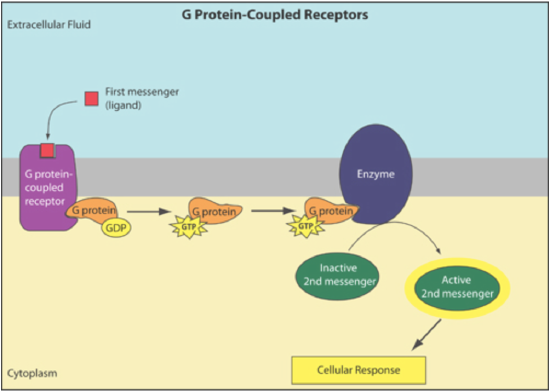Here the cell signal occurs in between cells having physical contact with each other. For E95E155 stages four to six sections were included from different embryos.
We aimed to determine if TXNDC5 also contributes to LF and its potential as a.

. These cell types were either located in specific anatomic regions eg cardiomyocytes hepatocytes and different types of neurons or represented common cell types spread across multiple sites eg chondrocytes epithelial cells myoblasts. Then signal transduction which is where the chemical signal results in a. Three Stages of Cell Signaling.
Signal transduction is the process by which a chemical or physical signal is transmitted through a cell as a series of molecular events most commonly protein phosphorylation catalyzed by protein kinases which ultimately results in a cellular responseProteins responsible for detecting stimuli are generally termed receptors although in some cases the term sensor is used. Types of cell signaling Contact dependent cell signaling. For E165 18 sections were profiled.
D All of the above. Apoptosis is also essential for normal embryological development. Falling off is a form of programmed cell death that occurs in multicellular organisms.
In effect signal transduction is said to have three stages. First reception whereby the signal molecule binds the receptor. In vertebrates for example early stages of development include the formation of web-like tissue between individual fingers and toes Figure 915.
A In plants the cell signaling occurs through phytohormones b Cell signaling is used to study the context of human diseases c Cell signaling is used to study the signaling between cells of an organism d All of the above. But both the cells are physically connected where the signaling occurs. This occurs at the cell membrane level.
Depending on cell type damagerepair capacities and cellular metabolic circumstances 4-HNE can promote cell survival or induce cell death. During the course of normal development. Interaction of the T cell receptor TCR with an MHC-antigenic peptide complex results in changes at the molecular and cellular levels in T cells.
At its core cell signaling can simply be described as the production of a signal by one cell. Apoptosis from Ancient Greek. Biochemical events lead to characteristic cell changes and deathThese changes include blebbing cell shrinkage nuclear fragmentation chromatin condensation DNA fragmentation and mRNA decay.
Target cells have proteins called receptors. Recently we identified thioredoxin domain containing 5 TXNDC5 an ER protein disulfide isomerase PDI as a critical mediator of cardiac and lung fibrosis. One cell has a signal molecule and the other has a receptor moiety on their cell surfaces.
This signal is then received by a target cell. Cell cycle assays are used to determine the proportion of cells at different stages of the cell cycle via flow cytometry. During cell cycle progression cells increase in size G 1 phase which is followed by DNA synthesis and replication S phase further growth G 2 phase and finally by mitosis M phase and cell division.
The outside environmental cues are translated. In TNBC and certain other late-stage tumors TGF-β signaling cannot suppress cell proliferation and induces andor enhances epithelial-to-mesenchymal transition EMT a cellular program that. The transcriptional and expressing levels of CSF1R were also significantly increased in prion-infected cell line and mice and colocalization of CSF1R with neurons and microglia was observed in the brains of prion-infected mouse models.
4-HNE at physiological levels is enzymatically metabolized and at low levels plays an important role as signaling molecule stimulating gene expression enhance cellular antioxidant capacity and exert adaptive. Currently there is no effective therapy for LF. Which of the following signal molecules is not used for extracellular signaling.
Chemical signals are released by a signaling cell and received by a target cell. Background and objectives Liver fibrosis LF occurs following chronic liver injuries. Removal of PrPSc replication by resveratrol in SMB-S15 cells induced limited reductions of cellular levels of M-CSF and CSF1R.

General Signal Transduction Pathway Biol 2382

Signal Transduction Biology Libretexts


0 Comments